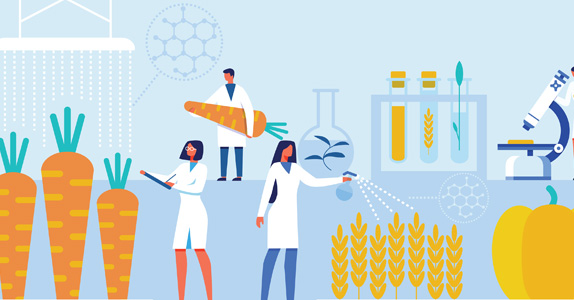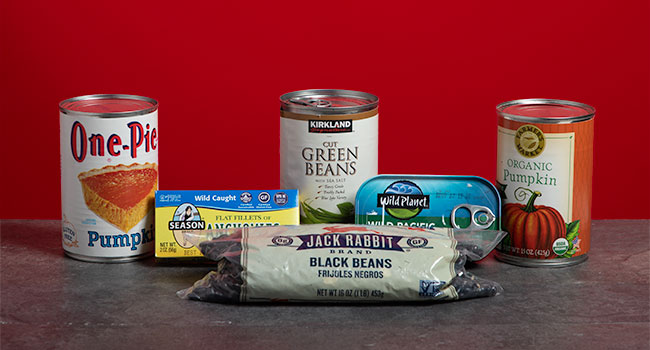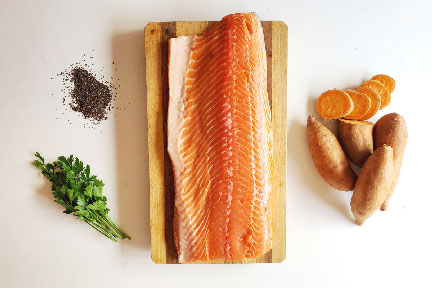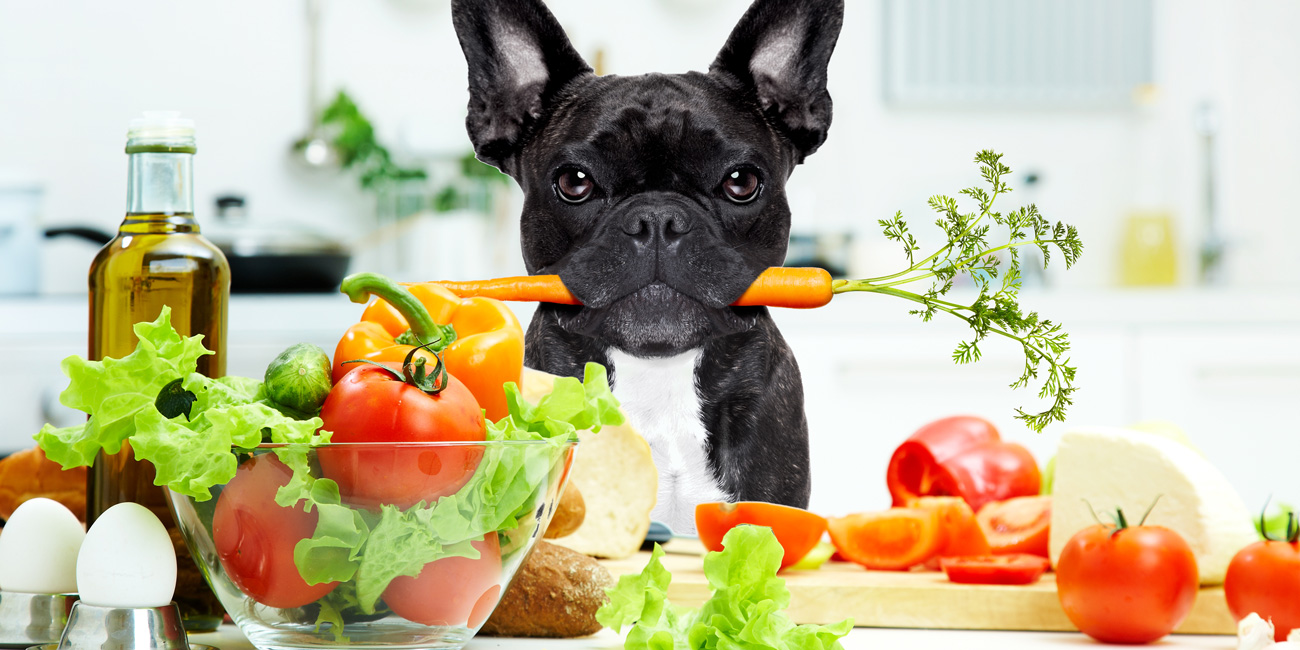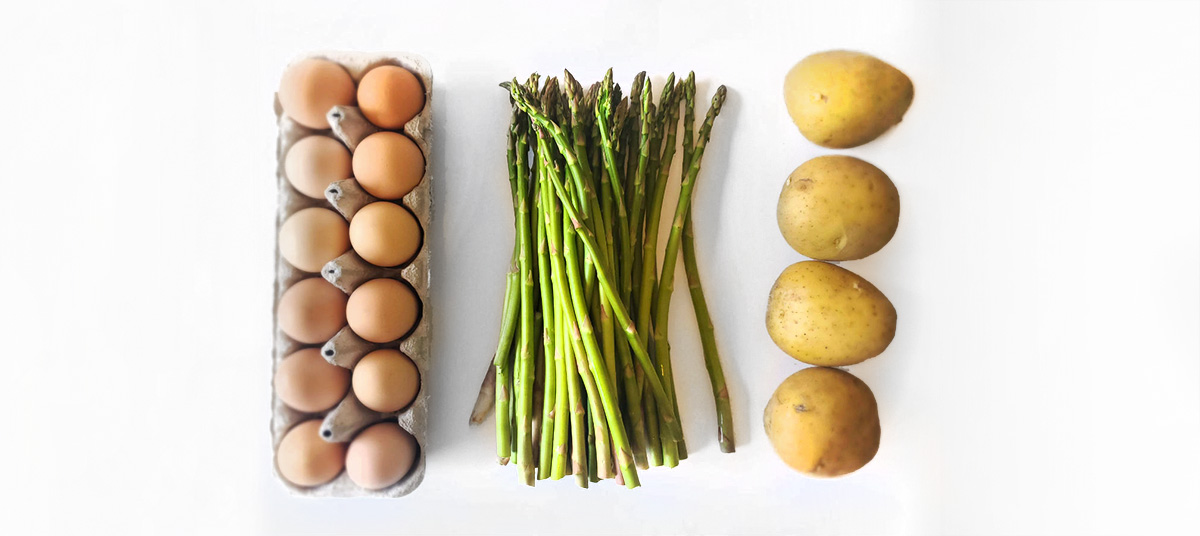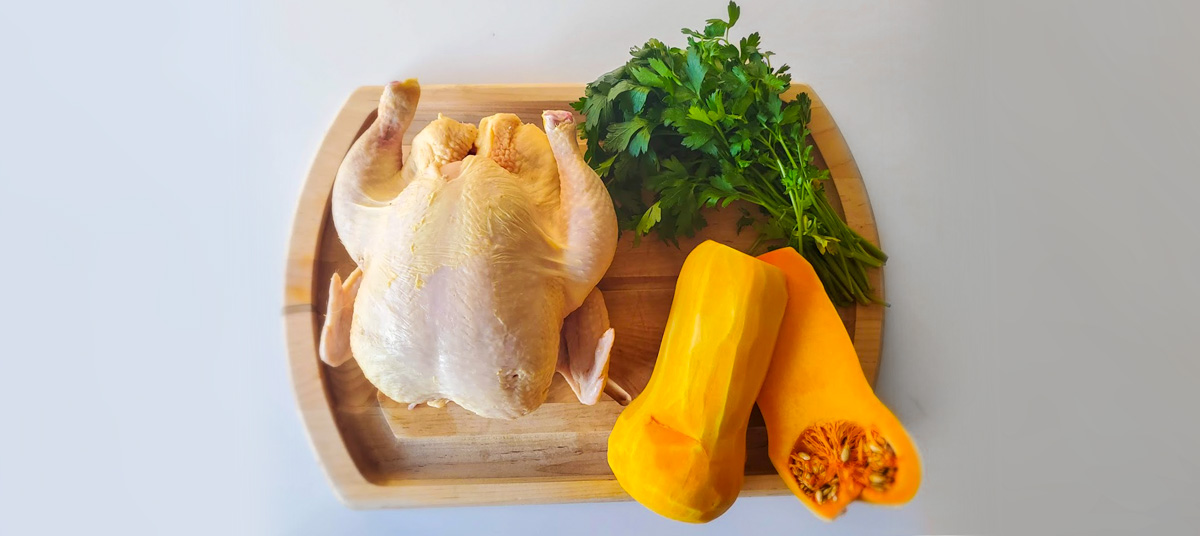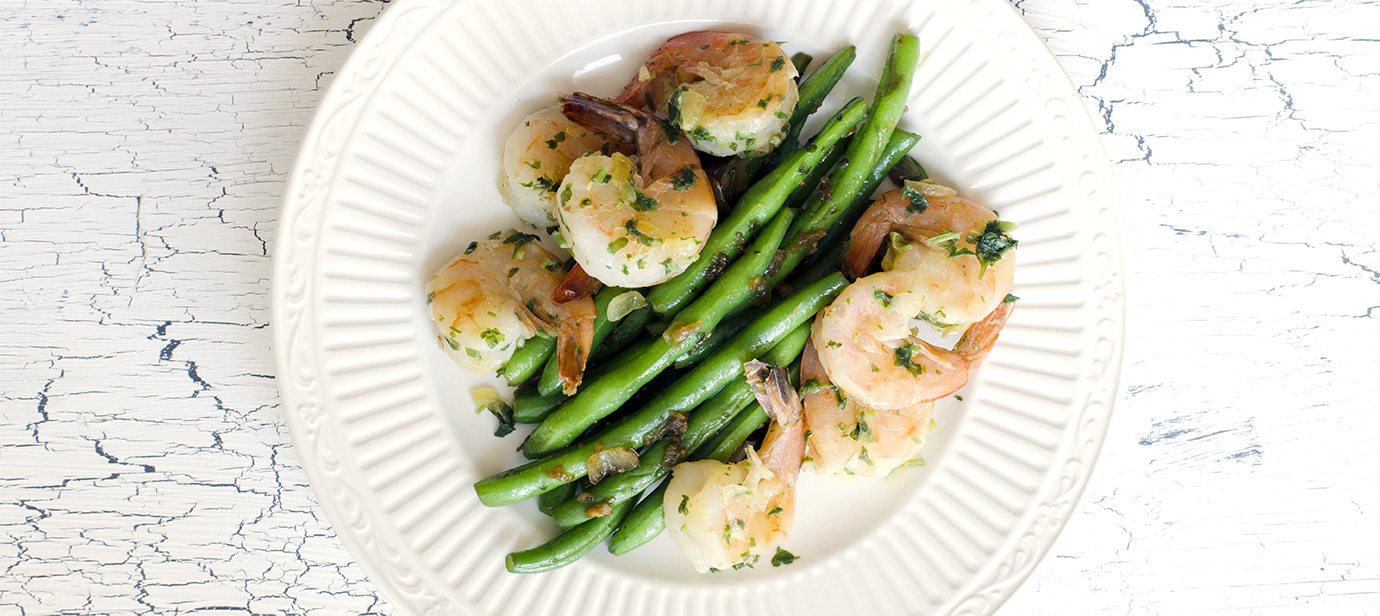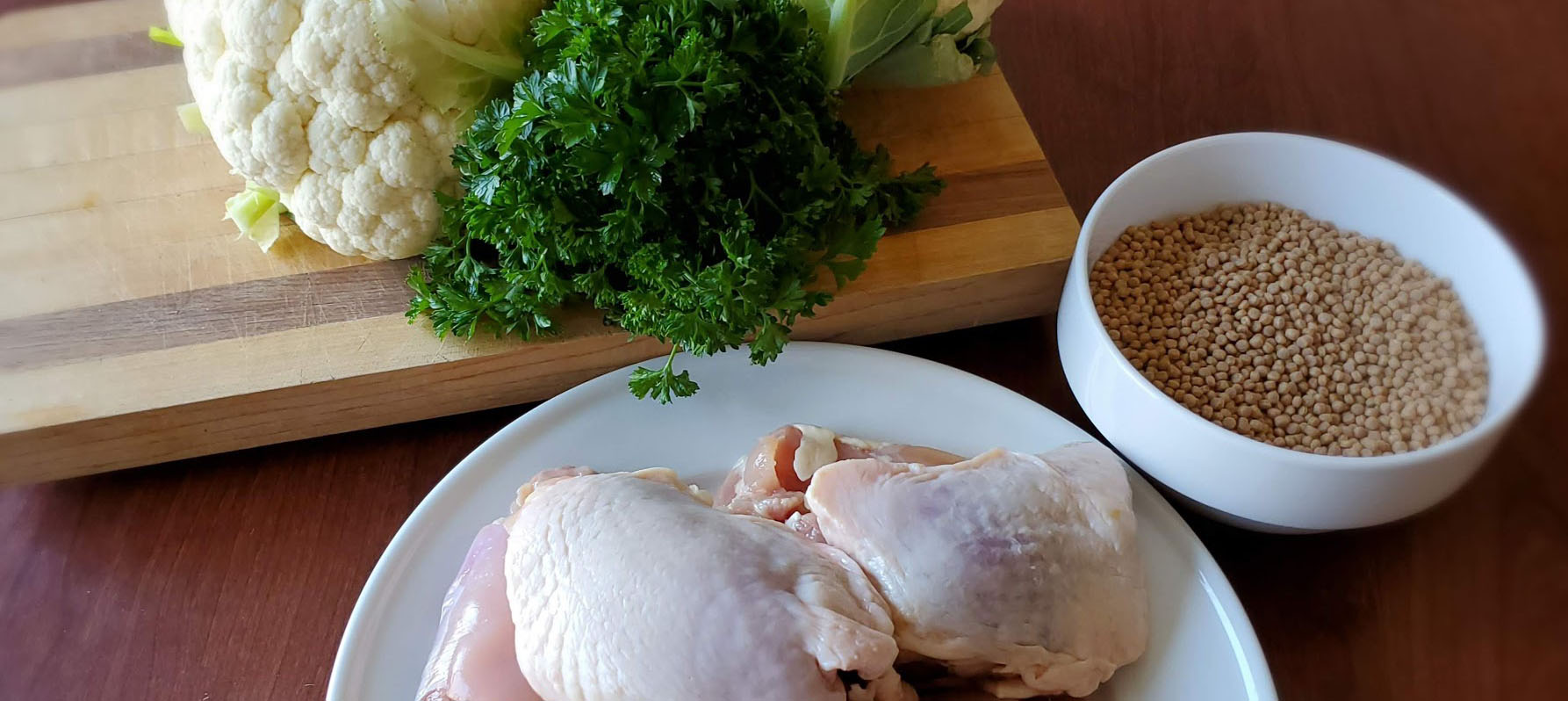Dog Food: The Science of Dog Nutrition
by Jennifer Wheeler
When I shop for my own dinner I’ll occasionally buy frozen lasagna, or instant rice pilaf, or a can of soup, but even if it’s the “all natural” product, I know that it’s not natural. It is processed food, and I usually try to stick to the fresh stuff. Most people I know feel the same way. So how do we forget that even the expensive, organic brands of commercial pet foods are full of ingredients that, no matter what quality they started out as, have been processed, reprocessed, and preserved for our convenience? How did our nutritional compass for pet food become so disoriented?
If you have read part I and part II of this series you know that the answers to these questions boil down to convenience and marketing. But despite the unsavory nature of the commercial pet food industry, if our dogs are healthy on a diet of kibble, does it really matter? This article, the last in the dog food series, will finally get to the details of nutritional requirements for your dog and the choices available to you. Dogs can live healthy lives on a diet of kibble, but if done correctly home prepared meals can be a more enjoyable and more nutritious option for your pup. In the end the choice should be yours, and to really be yours it has to be informed.
1. Nutritional Requirements
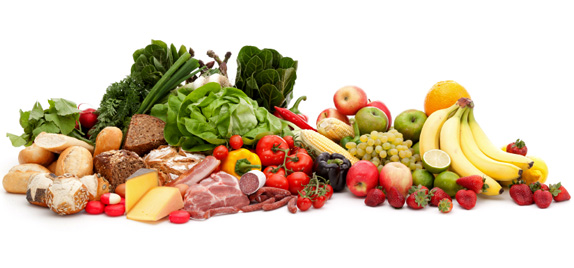
Let’s look at the nutrient profiles that are based on the most comprehensive and scientifically-sound research available. As discussed in the previous article, pet food manufacturers must follow the AAFCO guidelines in order to advertise their food as “complete and balanced,” and those guidelines break the components of a healthy diet for dogs into four main categories: protein, fat, vitamins and minerals. Here, I provide an overview, but for more detailed information I highly recommend referencing the NRC’s publication, The Nutrient Requirements of Dogs and Cats, or the AAFCO profiles found at the FDA website.
Protein
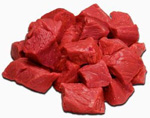
Adult dogs need to consume at least 18% protein of the dry ingredients of their total food consumption, an amount that is determined based on the weight, life stage and activity level of the dog. This metric always needs to be adjusted for the amount of water in the food – canned food is about 75% water, kibbled food is about 10% water and fresh meat is about 70% water. If you are feeding your dog home-prepared meals, fresh meat is about 70% protein by dry weight, so meeting the requirement is relatively easy.
Commercial pet foods are required to meet a crude protein level which, as mentioned in the last article, is a sort of measurement by proxy. Protein is roughly 16% nitrogen by weight, so the nitrogen levels in food are measured to determine the crude protein quantity present. Unfortunately, there are other substances that contain nitrogen, mimicking protein and sometimes adulterating the test results.
[pullquote]Ideally, dogs will consume animal protein because the essential acids present are closest to those that dogs need.[/pullquote]In addition to quantity, the quality of protein in a dog’s diet is very important. Quality refers to the balance of constituent amino acids present in a protein source. Proteins have a total of twenty amino acids, about half of which dogs make on their own. Amino acids that aren’t made are considered “essential” because they must be eaten. The quality of protein is determined by how well the proportions of essential amino acids present in a protein match the needs of the animal that is eating it. Ideally, dogs will consume animal protein because the essential acids present are closest to those that dogs need. Grains also contain essential amino acids, but in much lower quantities. Because meat is so much more expensive, pet food manufacturers will often use grains as the source of protein and add in the necessary amino acids.
Fat
We all need fat and mixtures of fatty acids for many reasons including to help our bodies absorb vitamins, for cell function and for energy. For dogs fat should be about 11-12% of their diet. Saturated fats don’t matter as much for dogs as they do for humans because dogs have a lot more HDL (good cholesterol). What does matter are the amounts of Omega-3 and Omeaga-6 fatty acids and the balance between them. From Omega-6 dogs require linoleic acid to prevent skin and coat problems, and from Omega-3 they require alpha-linolenic acide (ALA) which their bodies convert to Docosahexaenoic acid (DHA) which is vital. The balance or ratio between the fatty acids is important because too much Omega-6 may inhibit the conversion of ALA to DHA, but we don’t know enough about it yet. Meat, eggs, fish and nuts are all good sources of fat for dogs.
Vitamins and Minerals

Extra Stuff
What about the abundance of the supplements, foods with special nutrient claims and treats? In Part II I mentioned that anything marketed as having something above and beyond the norm – the AAFCO profile standard – is probably a gimmick, but let’s dig a little deeper and look at some of the most popular supplements to understand why:
- Taurine: dogs don’t actually need it, they make their own.
- Chondroprotectives(like chondroitin sulfate and glucosamine): the studies that have been down show only a mild placebo effect on the human owners (meaning we tend to believe that the pill is helping the dog), but there is no evidence for actual improvement in joints.
- Probiotics: if you want to give your dog the good bacteria, stick with fresh yogurt. Processing or freezing yogurt kills almost all of the useful probiotics. If your dog enjoys the $8 frozen treats, by all means buy them. But realize that it’s more of a junk food treat and not a nutritional supplement.
- Vitamin C: it’s often added to replace what is lost through processing, but dogs make their own.
- Omega 3 fats: there is enough in the normal food, without extra.
- Treats: they contain a lot sugar. Candy for your dog, money-makers for the companies.
- Antioxidants: it has been shown that in humans, over-consumption might have risks. Why risk the health of our dogs?
2. Risks of Commercial Pet Food
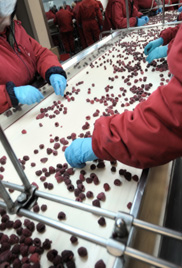
- Sometimes the recipe goes wrong: Feeding Studies
Part II of this series outlined the various ways that commercial pet food companies can provide the required statement of guaranteed analysis: by conducting a feeding study, by formulating foods specifically to meet the AAFCO profiles, or by making foods with formulas similar to those already tested in a feeding study. The best way to guarantee that a food recipe is nutritionally adequate is, not surprisingly, to conduct a feeding study. But feeding studies are expensive and time consuming, so most companies opt for one of the other choices, and this is where problems can arise.
Merely formulating a dog food recipe based on the AAFCO nutrient profiles is insufficient because, without a feeding study, it is impossible to tell how well dogs are actually digesting and using the combination of nutrients that they consume. The AAFCO has tried to compensate for this by making the nutrient profile requirements higher than those deemed necessary by the NRC, but in the end, if your pup isn’t digesting the nutrient, it doesn’t really matter if he is pooping out 10 milligrams or 100 milligrams of a vitamin. He is still pooping it out.
- Sometimes the ingredients go wrong: Recalls
Pet food recalls are a big deal. Not just because tainted food is so dangerous, but because having a highly concentrated and incestuous industry means that one bad ingredient from one source can contaminate an enormous percentage of the products in the marketplace.
The 2007 recalls of melamine-tainted foods are perhaps the most tragic example of what happens in such an industry when feeding studies aren’t required. Menu Foods, a company that produced dog food for several well-known names, was importing what it thought was wheat gluten from China, but was in fact wheat flower tainted with Melamine. Melamine, when added to wheat flour, looks like wheat protein and contains 67% nitrogen, but is much cheaper than producing actual wheat protein, and, it turns out, toxic for cats and dogs. The tainted ingredient worked its way into many, many brands of foods, and without adequate feeding studies the problem was not discovered until many, many pets had died.
Tainted food is not uncommon, and the industry is not well regulated. Something to keep in mind.
- Sometimes we just don’t know: the Veterinarian Education Deficit
Feeding your loved ones an unrecognizable mixture of processed stuff instead of real, fresh food might have risks that we just aren’t aware of yet. Without long-term studies (which there aren’t), how do we know if the stuff in the bag is up to par? You might think that getting a recommendation from your veterinarian is the best way to go, and while some vets may have the answers, most don’t. Veterinarians have relationships with pet food companies that are similar to the relationships between doctors and pharmaceutical companies – they earn money by promoting specific brands of food. But the situation with vets should be of concern to pet owners for another reason: most of them get very little formal education with respect to small animal nutrition. Much of what veterinarians know is from the pet food manufacturers who devote an enormous amount of money to training and marketing themselves.
3. Alternatives and the Risks

Charlie eating raw chicken
The only real alternative to commercial pet food is to prepare your own (though there are also commercial options for raw or less-processed pet food). The most common mistake people make when preparing meals for their dog at home is not providing a varied diet. Raw meat, bones and organs must be supplemented with fruits and vegetables. Not only do fruits and vegetables provide excellent sources of nutrition in their own right, but they also help to compensate for the lower quality of meat found in grocery stores today. While the protein and fat of wild animals is rich in all of the essential amino acids, fats, vitamins and minerals because those animals themselves eat a varied and natural diet, the quality and composition of the meat purchased in a store is very different.
In addition, while dogs are less susceptible to dangerous bacteria found on raw meat, they are not immune. It might be a small risk, but it is still a risk.
The other disadvantage of home-prepared dog food is the inconvenience. It takes more work and more time to ensure that the food is nutritionally balanced, and not putting in the time and research can have consequences. Even if what you feed your pup lacks only one or two essential nutrients, the result can be a sick pet. That being said, the same is true for humans – our nutritional needs are complex – but most of us manage to be healthy without having to analyze the nutritional composition of every meal we eat.
4. An Amateur’s Advice
It’s a lot to take in, but in essence learning and making decisions about what to feed your dog is pretty straightforward.
Decide what you are comfortable with
Whether you are going to feed your dog commercial pet food or home-prepared meals or a mix of both is your decision as a dog owner. It is fine to choose commercial pet food – it is certainly convenient, but there are important advantages to home-prepared food that are worth considering. If you do decide to prepare meals at home for your dog, make sure you consult the NRC publication for a more comprehensive understanding of what is required. The important thing is that the decision be informed and compatible with your lifestyle.
Use Common Sense
Remember the disorientation I mentioned in the beginning of this article? This is where it applies. Processed food is processed food, not miracle mush. Fresh food is fresh food, not dangerous. It is possible, and once you get in the habit, not that difficult to prepare home-cooked meals for your dog. Meat, fruits, vegetables and even grains can be part of a healthy diet using the AAFCO nutrient profiles and a little common sense as your guide. Become familiar with the major differences between human and dog nutritional needs, and brace yourself against the marketing gimmicks that are there to benefit the industry, not to benefit you, your wallet, or your dog. Add a daily vitamin for good measure and follow the basic principles of nutrition discussed below.
Follow Basic Principles: Balance and Variety
As with feeding your children or other loved ones, balance, variety and moderation are the basic principles of nutrition that should be your guide. It’s very hard for your pet to develop a deficiency if you are feeding her a varied diet. I feed my dogs something different every night, including different kinds of kibble if I have run out of fresh food, and it never gives them gastrointestinal problems because they are used to having a varied diet. In this way my dogs will never be susceptible to the kinds of deficiencies or illnesses that occur when eating a tainted or improperly formulated dog food over time.
A balanced diet is equally important. Commercial foods are balanced for you, but when preparing meals for your dog at home it takes extra effort to get the right proportions of fat, protein, vitamins, minerals and fiber. But not every meal has to include everything. You might feed your child chicken and spinach one night, spaghetti with tomato sauce and meatballs the next and feeding your dog can be the same way. Sometimes I prepare a well-balanced meal for my dogs like sweet potatoes, eggs, spinach and raw chicken drumsticks (I like to give them raw meat because the bones are safer to eat this way, and bones are great for their teeth and health). Other nights they will only get organs, with carrots for a snack during the day. If you are preparing meals for your dog, organs are a great source of nutrients. Another one of my basset hound’s favorite meals is smoked fish, brown rice and red cabbage. Experiment and learn what your dog likes to eat, and it doesn’t have to be expensive. Most grocery stores will cheaply sell you the parts of the animal that humans don’t like to eat (like backs and necks), that are perfectly nutritious and delicious for your pup.
The Real Nutritional Magic Bullet
[pullquote]One of the most important things you can do for your pet is to keep her lean.[/pullquote]There is a secret for extending your dog’s life and improving her health, and you certainly don’t need a special food or supplement to do it for you. Drum roll . . . It’s calorie restriction. Like in humans, one of the most important things you can do for your pet is to keep her lean. Pet food manufacturers are not required to put calorie content on the label, and this allows them to make more money off of yet more specialty diet food products. But it is much easier to just feed your dog less. You aren’t going to starve her. In the wild, dogs can go up to a week without eating , and for optimal health adult dogs should be fed just once a day. If you are feeding your dog commercial pet food, follow the feeding instructions, cutting back if your dog puts on weight or maintains too much weight. If you are feeding him home-cooked meals, watch, weigh and adjust the amount of food accordingly. You can also use leaner meats if necessary.
Food is not love. Extending your dog’s life by years is love. Keep her lean!
And that concludes the dog food series: Part I: The Story of Kibble; Part II: The Politics of Production; and Part III: The Science of Dog Nutrition. But not to worry, Emma (my basset hound), Oliver (my dachshund) and I will be back every month with a recipe for one of our favorite new home-prepared meals.
We are always happy to hear your feedback and answer your questions as well!
About the author
Jennifer is a writer and graduate of NYU School of Law. Jennifer researches and writes original, science-based articles for the NYC Doggies blog, and her writing on other topics can be found in the Huffington Post. Jennifer and Ovidiu have co-authored the upcoming book, WHOLE DOG PARENTING: EVERYTHING YOU NEED TO RAISE AND TRAIN AN URBAN PUP
